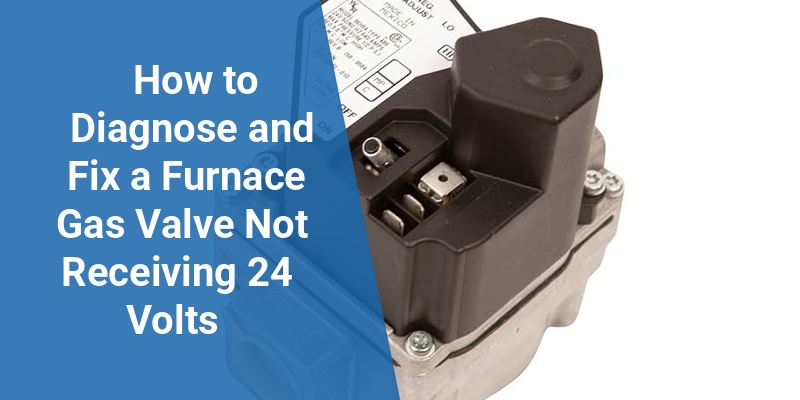When a furnace gas valve is not getting 24 volts, it can cause the heating system to fail, leaving a home cold and uncomfortable. Understanding the electrical and control components that regulate gas valve operation is crucial for safe and effective furnace repairs. This article provides a comprehensive guide for American homeowners and HVAC technicians on diagnosing and resolving issues preventing the furnace gas valve from receiving its necessary 24-volt power supply.
| Possible Causes | Symptoms | Suggested Inspection |
|---|---|---|
| Faulty Thermostat | Furnace fails to initiate burner sequence | Check thermostat wiring and settings |
| Blown Fuse or Tripped Circuit Breaker | No power to control board or gas valve | Inspect fuse box and reset breakers |
| Defective Control Board | No or inconsistent voltage output to gas valve | Measure voltage output at control board terminals |
| Wiring Problems | Intermittent voltage or no voltage at gas valve | Examine wiring connections for damage or loose terminals |
| Ignition or Safety Switch Failure | Burner will not ignite, no voltage to valve | Test flame sensor, limit switches, and rollout switches |
How the Furnace Gas Valve Works
The gas valve in a furnace controls the flow of natural gas or propane to the burner assembly. It operates electrically, requiring a 24-volt signal from the thermostat and control board to open and allow gas flow. Without this 24-volt power, the valve remains closed as a safety measure to prevent unburned gas leakage.
Typically, the 24 volts come from the furnace’s control board and are activated when the thermostat calls for heat. The control board sends the electrical signal to the gas valve coil, energizing it and opening the valve. The burner can then ignite, producing heat.
Common Reasons Why the Furnace Gas Valve Is Not Getting 24 Volts
1. Thermostat Problems
Since the thermostat instructs the furnace to heat, a faulty or miswired thermostat can prevent the gas valve from receiving 24 volts. Thermostat wiring errors, dead batteries, or incorrect heat settings often cause this issue.
2. Blown Fuse or Circuit-Breaker Trip
The furnace control board and gas valve rely on power protected by fuses or circuit breakers. If a fuse blows or a breaker trips, the valve will receive no voltage. Locate the fuse box or breaker panel servicing the furnace for inspection.
3. Defective Furnace Control Board
The control board acts as the furnace’s brain, managing signals to the gas valve. A malfunctioning board may fail to send the required 24 volts due to burned-out components or internal faults. Voltage testing with a multimeter at the board terminals can identify this problem.
4. Wiring Issues
Damaged, corroded, or loose wires between the control board, thermostat, and gas valve can interrupt voltage flow. Electrical continuity testing is essential to identify any breaks or poor connections in the circuit.
Call 888-906-9139 for Free Local HVAC Quotes – No Obligation, Just Savings!
5. Safety and Limit Switches Preventing Voltage
Safety limit switches, flame sensors, rollout switches, and pressure switches can inhibit the gas valve’s voltage when they detect unsafe conditions. These components must be tested and cleared or replaced to restore furnace operation.
Step-By-Step Troubleshooting Guide to Repair Furnace Gas Valve Voltage Issues
Turn Off Power Before Starting
For safety, always turn off the furnace’s power supply at the breaker panel before inspection or repair. Handling electrical components with live current can cause injury or equipment damage.
Check Thermostat Function and Wiring
- Ensure the thermostat is set to “Heat” and the temperature setting calls for warmth.
- Inspect thermostat batteries if applicable.
- Use a multimeter to check continuity on thermostat wires, especially the R (power) and W (heat call) terminals.
Inspect Fuse and Circuit Breakers
- Locate the furnace fuse, often a 3-amp or 5-amp fuse near the control board.
- Replace blown fuses and reset tripped breakers.
- Test for voltage at the furnace input terminals after ensuring power is restored.
Measure Voltage at the Gas Valve
Using a multimeter set to AC volts, check the terminals on the gas valve coil while the thermostat calls for heat. There should be approximately 24 volts. No voltage indicates an upstream issue.
Test Furnace Control Board Outputs
- Refer to furnace wiring diagrams to locate the output terminals for the gas valve.
- Measure voltage when the thermostat calls for heat.
- No voltage output suggests control board malfunction or safety switch interruption.
Evaluate Safety and Limit Switches
- Check limit switches on the furnace for continuity and proper function.
- Inspect and clean flame sensors.
- Reset any tripped rollout switches and confirm pressure switch operation.
Examine Wiring Harness and Connections
- Look for visual signs of damage, corrosion, or loose connectors in the wiring path.
- Test electrical continuity using a multimeter.
- Repair or replace any damaged wiring.
When to Call a Professional HVAC Technician
While basic tests like fuse checking and thermostat inspection can be done by homeowners, diagnosing control board faults, flame sensor testing, and high-voltage safety component repairs require specialized knowledge and tools. In such cases, hiring a licensed HVAC technician ensures safety and proper furnace restoration.
Preventive Maintenance Tips to Avoid Gas Valve Voltage Problems
- Replace thermostat batteries annually and check settings seasonally.
- Schedule furnace tune-ups before winter season, including control board and safety device inspections.
- Ensure wiring connections remain clean and tight during maintenance.
- Keep furnace area clean and free of debris to prevent sensor obstructions.
